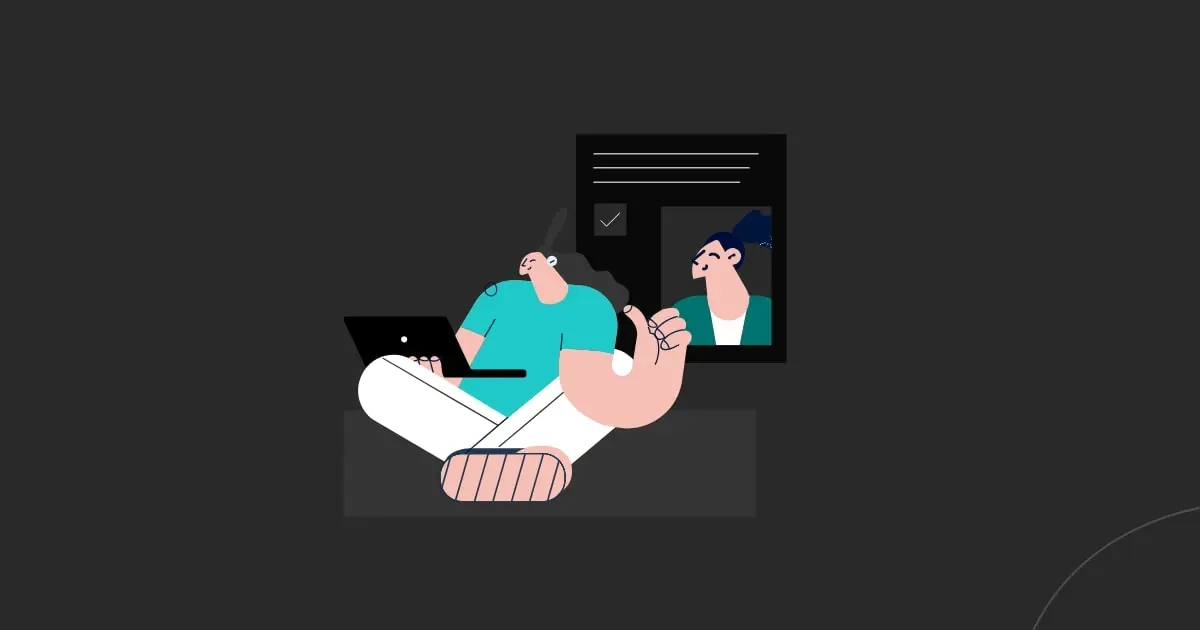Blended learning, a modern method of teaching and learning practice has emerged in an era characterized by high technological development rates, transforming education paradigms. Blended learning strategies, which integrate the strengths of traditional in-person instructions with the flexibility and innovative capabilities of online learning, reshape the ways of delivering training in various sectors.
In this blog, we elaborate on the effective features of blended learning strategies in detail, supported by the latest statistics and examples, which help you understand their impact.
What is Blended Learning?
Blended learning, or hybrid learning, is a type of learning in which classroom-based face-to-face instruction is combined with online educational content to create a holistic, dynamic learning experience. This approach uses technology to personalize the learning process, foster collaboration, increase accessibility, and retain the benefits of human interaction.
Blended learning does not follow any one-size-fits-all model. It encompasses:
- Station Rotation Model: For a portion of the class time, learners move through different stations consisting of online modules, group work, or instructor-led sessions.
- Flipped Classroom: Learners watch content at home in advance (e.g., pre-recorded lectures) to apply their knowledge in class by discussing or working out problems and practices.
- Flex Model: Online learning is the primary or sole delivery mode supplemented with instructor guidance.
- Self-Directed Learning: A learner is in charge of taking his course, pace, and progression, all under support and assessment.
Emergence of Blended Learning
Blended learning has gained significant acceptance as a byproduct of the COVID-19 pandemic. In light of the crisis, all organizations worldwide had to transition into hybrid models. Global Market Insights estimates that the blended eLearning market will exceed $325 billion by 2025.
The following factors are driving the increasing popularity of blended learning:
- Accessibility: Blended learning reduces geographical and socioeconomic barriers to accessing training.
- Flexibility: Blended learning enables learners to follow a learner-centered approach and flexibility in class time to access content.
- Engagement: Combining digital tools with more traditional teaching approaches makes the entire process highly interactive and engaging.
- Cost-Effectiveness: Reduces the cost that organizations incur when maintaining physical infrastructure through using digital resources.
Blended Learning Strategies That Work
Effective blended learning requires thoughtful design and a strategic approach, with goals directed at the learner’s needs, access to available technology, and other instructional needs. Below are some of the strategies for successful blended learning.
1. Personalized Learning Pathways
With blended learning, personal learning experiences can be designed according to individuals’ styles, preferences, and paces. Instructors will use data-driven tools to identify learners’ strengths and weaknesses and establish their personalized pathways. According to the International Journal for Multidisciplinary Research (IJFMR), when thoughtfully implemented, individualized learning can enhance student motivation and engagement in mathematics by tailoring instruction to meet individual needs, fostering mathematical confidence, and supporting overall learning development.
2. Blended Learning Environments
Blended learning fosters active learning by incorporating online modules, discussions, collaborative teamwork, and problem-solving activities. It keeps the learners’ attention and inspires and motivates them. The National Library of Medicine reports that students engaged in self-directed learning through the flipped classroom method achieved higher average scores.
3. Data-Driven Insights and Analytics
Learning analytics involves the measurement, collection, analysis, and reporting of data related to learners and their contexts, aimed at understanding and optimizing both the learning process and the environments where it occurs. A learning platform can capture the student’s progress and provide insights into which interventions will be made in real time when learners are struggling.
4. Collaborative Learning Environment
The best way to engage in effective blended learning strategies is by facilitating opportunities for collaborative learning. They could use discussion boards, video conferencing, and collaborative documents to promote peer-to-peer interaction and knowledge sharing.
5. Professional Development for Instructors
The effective implementation of blended learning hinges on the right preparation of educators through the best materials and resources. Continuous professional development ensures that an instructor is well-equipped to use digital tools correctly and appropriate pedagogical strategies.
6. Gamification and Interactive Learning
Gamifying blended learning through quizzes, badges, and leaderboards helps motivate learners to stick to the instruction with enthusiasm for it. Gamifying blended learning through quizzes, badges, and leaderboards helps motivate learners to stick to the instruction with enthusiasm for it. By incorporating elements of competition and achievement, learners are more likely to stay engaged and focused on their learning goals. This can ultimately lead to improved retention and understanding of the presented material.
7. Equity and Access
Blended learning ensures its effectiveness comes with equity considerations, including equitable device access and disability accommodations for learners. This can be achieved by providing multiple content delivery and assessment modes to cater to diverse learning needs. Additionally, offering support services such as tutoring and counseling can help ensure all learners have equal opportunities for success in a blended learning environment.
Conclusion
Effective blended learning models depend on adaptability, involvement, and data-based assessment. If promising paths, collaboration promotion, and the acceptance of leading-edge technologies in mixing instructional methods are all considered, education can be developed via this model of teaching and learning.
Although they are opening new horizons for them, creating a more inclusive and efficient learning environment that functions with the range of demands of every learner is still for the joint benefit of learners, educators, and their organizations. Start building your future-focused blended learning strategy today. Get in touch!





